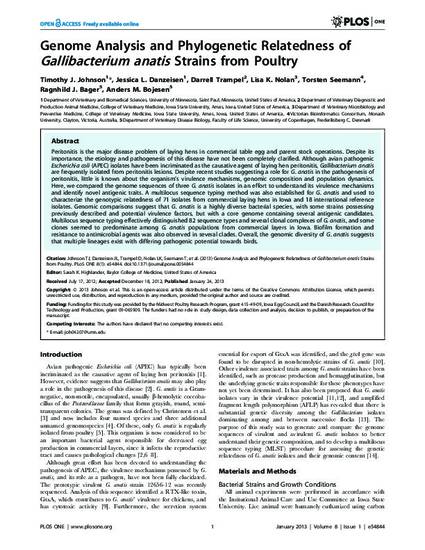
Peritonitis is the major disease problem of laying hens in commercial table egg and parent stock operations. Despite its importance, the etiology and pathogenesis of this disease have not been completely clarified. Although avian pathogenic Escherichia coli (APEC) isolates have been incriminated as the causative agent of laying hen peritonitis, Gallibacterium anatis are frequently isolated from peritonitis lesions. Despite recent studies suggesting a role for G. anatis in the pathogenesis of peritonitis, little is known about the organism’s virulence mechanisms, genomic composition and population dynamics. Here, we compared the genome sequences of three G. anatis isolates in an effort to understand its virulence mechanisms and identify novel antigenic traits. A multilocus sequence typing method was also established for G. anatis and used to characterize the genotypic relatedness of 71 isolates from commercial laying hens in Iowa and 18 international reference isolates. Genomic comparisons suggest thatG. anatis is a highly diverse bacterial species, with some strains possessing previously described and potential virulence factors, but with a core genome containing several antigenic candidates. Multilocus sequence typing effectively distinguished 82 sequence types and several clonal complexes of G. anatis, and some clones seemed to predominate among G. anatis populations from commercial layers in Iowa. Biofilm formation and resistance to antimicrobial agents was also observed in several clades. Overall, the genomic diversity of G. anatis suggests that multiple lineages exist with differing pathogenic potential towards birds.
Available at: http://works.bepress.com/lisa_nolan/12/

This article is from PLoS ONE 8, no. 1 (2013): e54844, doi:10.1371/journal.pone.0054844.